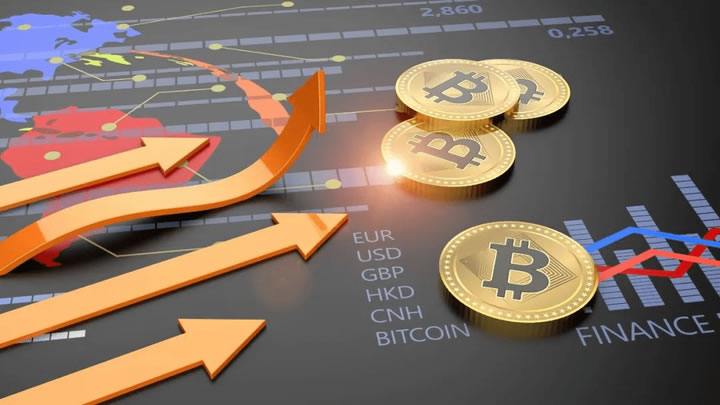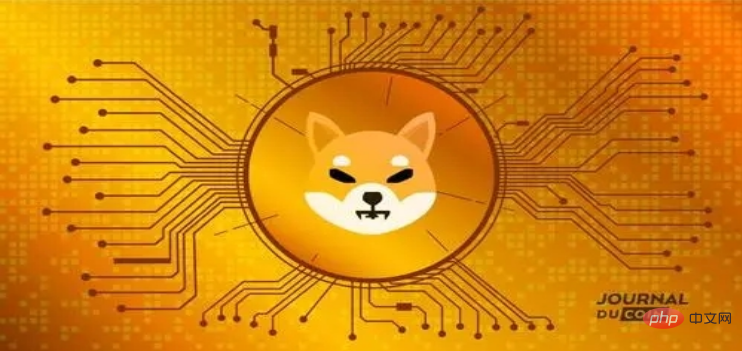What is a stablecoin in the currency circle? What are stablecoins?
Stablecoin Overview: Types, Risks and Management Definition: A stablecoin is a cryptocurrency designed to offset the volatility of the cryptocurrency market by being pegged to a traditional asset such as fiat currency or gold. Key Features: Price Stability Wide Acceptability High Liquidity Category: Fiat Currency-Backed: Pegged to a fiat currency (such as the U.S. dollar) and usually managed by a centralized institution. Commodity-backed: linked to commodities such as gold and supported by reserves of its underlying assets. Cryptocurrency-backed: Backed by collateral from other cryptocurrencies (such as Bitcoin), with supply regulated through smart contracts to maintain price stability. Risks: Stability Risk: Decoupling from target assets Operational Risk: Failures, attacks, or regulatory issues faced by centralized institutions Regulatory Risk: Changing cryptocurrency regulations Risk Management: Diversify your investments by choosing reputable cryptocurrencies Hongshang understands the stability mechanism and establishes risk management strategies, such as stop-loss orders or liquidity providers

Cryptocurrency Stablecoins: Definition, Classification and Risk Management
Main points:
- The definition and characteristics of stablecoins in the currency circle
- Different categories of stablecoins
- Risk and management of stablecoins
The definition and characteristics of the currency circle stablecoin
The currency circle stablecoin is a cryptocurrency that aims to bind the price to a traditional asset (such as fiat currency or gold) to withstand the cryptocurrency market Inherent Volatility. Key features of stablecoins include:
- Price Stability: Unlike volatile cryptocurrencies, stablecoins are designed to maintain stable prices.
- Wide Acceptability: Stablecoins are generally accepted by various cryptocurrency exchanges and merchants.
- High Liquidity: Stablecoins have higher trading volume and liquidity than most cryptocurrencies.
Different Categories of Stablecoins
Stablecoins can be divided into different categories based on their support mechanisms:
1 . Fiat-backed stablecoins
- are pegged to fiat currencies such as the U.S. dollar or euro.
- Usually hosted by a centralized company or institution.
- For example: Tether (USDT), USD Coin (USDC), Binance USD (BUSD)
2. Commodity-backed stablecoin
- Linked to gold or other commodities.
- is backed by actual reserves of its underlying assets.
- For example: Pax Gold (PAXG), Tether Gold (XAUT)
3. Cryptocurrency-backed stablecoins
- Backed by collateral from other cryptocurrencies such as Bitcoin or Ethereum.
- Regulate supply through smart contract mechanisms to maintain price stability.
- For example: DAI, Liquidity USD (LUSD)

Risk and Management of Stablecoins
Although stablecoins are designed to Provide relatively stable prices, but there are still certain risks:
- Stability Risk: Stablecoins may face the risk of decoupling, causing their price to deviate from their target asset.
- Operational Risk: Stablecoins issued by centralized institutions are vulnerable to operational failures, hacker attacks, or regulatory actions.
- Regulatory Risk: Regulations in the cryptocurrency space are constantly changing and may have a significant impact on stablecoins.
Strategies for managing stablecoin risk:
- Diversification: Spread investments across different types of stablecoins , to reduce risks.
- Choose a reputable publisher: Research potential publishers and choose a company with a good reputation and a record of transparency.
- Understand the Stability Mechanisms: Understand the mechanisms supporting stablecoins to assess their decoupling risks.
- Risk Management: Develop strategies to manage potential stability or operational risks, such as stop-loss orders or liquidity providers.
FAQs
Q1: What are stablecoins mainly used for?
A1: Stablecoins are used for a variety of purposes, including:
- Stored value: A safe haven to hedge against volatility in the cryptocurrency market.
- Trading: Easily buy and sell crypto assets on cryptocurrency exchanges.
- Transfer: Transfer money across borders quickly and at low cost.
Q2: Are there risks in using stablecoins?
A2: Yes, stablecoins also have risks, including stability risks, operational risks and regulatory risks. However, these risks can be reduced through risk management strategies such as diversification and selecting reputable issuers.
Q3: Which type of stablecoin is the safest?
A3: Fiat-backed stablecoins are generally considered the safest because they are backed by real assets (such as fiat currencies). But all types of stablecoins carry some risk, so it’s important to choose based on your personal risk tolerance.
The above is the detailed content of What is a stablecoin in the currency circle? What are stablecoins?. For more information, please follow other related articles on the PHP Chinese website!

Hot AI Tools

Undresser.AI Undress
AI-powered app for creating realistic nude photos

AI Clothes Remover
Online AI tool for removing clothes from photos.

Undress AI Tool
Undress images for free

Clothoff.io
AI clothes remover

Video Face Swap
Swap faces in any video effortlessly with our completely free AI face swap tool!

Hot Article

Hot Tools

Notepad++7.3.1
Easy-to-use and free code editor

SublimeText3 Chinese version
Chinese version, very easy to use

Zend Studio 13.0.1
Powerful PHP integrated development environment

Dreamweaver CS6
Visual web development tools

SublimeText3 Mac version
God-level code editing software (SublimeText3)

Hot Topics
 Top 10 digital currency exchange app recommendations, top ten virtual currency exchanges in the currency circle
Apr 22, 2025 pm 03:03 PM
Top 10 digital currency exchange app recommendations, top ten virtual currency exchanges in the currency circle
Apr 22, 2025 pm 03:03 PM
Recommended apps on top ten digital currency exchanges: 1. OKX, 2. Binance, 3. gate.io, 4. Huobi, 5. Coinbase, 6. KuCoin, 7. Kraken, 8. Bitfinex, 9. Bybit, 10. Bitstamp, these apps provide real-time market trends, technical analysis and price reminders to help users monitor market dynamics in real time and make informed investment decisions.
 Reliable and easy-to-use virtual currency exchange app recommendations The latest ranking of the top ten exchanges in the currency circle
Apr 22, 2025 pm 01:21 PM
Reliable and easy-to-use virtual currency exchange app recommendations The latest ranking of the top ten exchanges in the currency circle
Apr 22, 2025 pm 01:21 PM
The reliable and easy-to-use virtual currency exchange apps are: 1. Binance, 2. OKX, 3. Gate.io, 4. Coinbase, 5. Kraken, 6. Huobi Global, 7. Bitfinex, 8. KuCoin, 9. Bittrex, 10. Poloniex. These platforms were selected as the best for their transaction volume, user experience and security, and all offer registration, verification, deposit, withdrawal and transaction operations.
 Top 10 Digital Virtual Currency Apps Rankings: Top 10 Digital Currency Exchanges in Currency Circle Trading
Apr 22, 2025 pm 03:00 PM
Top 10 Digital Virtual Currency Apps Rankings: Top 10 Digital Currency Exchanges in Currency Circle Trading
Apr 22, 2025 pm 03:00 PM
The top ten digital virtual currency apps are: 1. OKX, 2. Binance, 3. gate.io, 4. Coinbase, 5. Kraken, 6. Huobi, 7. KuCoin, 8. Bitfinex, 9. Bitstamp, 10. Poloniex. These exchanges are selected based on factors such as transaction volume, user experience and security, and all provide a variety of digital currency trading services and an efficient trading experience.
 What are the digital currency trading platforms in 2025? The latest rankings of the top ten digital currency apps
Apr 22, 2025 pm 03:09 PM
What are the digital currency trading platforms in 2025? The latest rankings of the top ten digital currency apps
Apr 22, 2025 pm 03:09 PM
Recommended apps for the top ten virtual currency viewing platforms: 1. OKX, 2. Binance, 3. Gate.io, 4. Huobi, 5. Coinbase, 6. Kraken, 7. Bitfinex, 8. KuCoin, 9. Bybit, 10. Bitstamp, these platforms provide real-time market trends, technical analysis tools and user-friendly interfaces to help investors make effective market analysis and trading decisions.
 What are the top ten digital currency trading software? The top ten exchange platforms in the currency circle
Apr 22, 2025 pm 03:06 PM
What are the top ten digital currency trading software? The top ten exchange platforms in the currency circle
Apr 22, 2025 pm 03:06 PM
The top ten trading softwares in the currency exchange platform are: 1. OKX, 2. Binance, 3. gate.io, 4. Huobi Global, 5. KuCoin, 6. Coinbase, 7. Kraken, 8. Bitfinex, 9. Bitstamp, 10. Poloniex. These platforms provide a variety of trading modes and security measures to ensure the safety of user assets.
 Top 10 digital currency exchange apps Recommended by the top ten digital currency exchanges
Apr 22, 2025 pm 03:12 PM
Top 10 digital currency exchange apps Recommended by the top ten digital currency exchanges
Apr 22, 2025 pm 03:12 PM
The top ten digital currency exchange apps are ranked: 1. Binance, 2. OKX, 3. gate.io, 4. Coinbase, 5. Kraken, 6. Huobi, 7. KuCoin, 8. Bybit, 9. Bitfinex, 10. Bittrex, these platforms were selected for their excellent performance in user experience, security, handling fees and transaction volume.
 gate.io sesame door latest official app address
Apr 22, 2025 pm 01:03 PM
gate.io sesame door latest official app address
Apr 22, 2025 pm 01:03 PM
The official Gate.io APP can be downloaded in the following ways: 1. Visit the official website gate.io to download; 2. Search "Gate.io" on the App Store or Google Play to download. Be sure to download it through the official channel to ensure safety.
 Top 10 safe and easy-to-use virtual currency trading platforms, ranking of the top ten reliable digital currency exchanges
Apr 22, 2025 pm 12:45 PM
Top 10 safe and easy-to-use virtual currency trading platforms, ranking of the top ten reliable digital currency exchanges
Apr 22, 2025 pm 12:45 PM
The top ten safe and easy-to-use virtual currency trading platforms are: Binance, OKX, gate.io, Coinbase, Kraken, Huobi, Bybit, KuCoin, Bitfinex, and Bittrex. These platforms are highly praised for their high liquidity, low transaction fees, diversified trading products, global layout, strong technical support, innovative trading systems, high security, rich currency and user-friendly interface.





